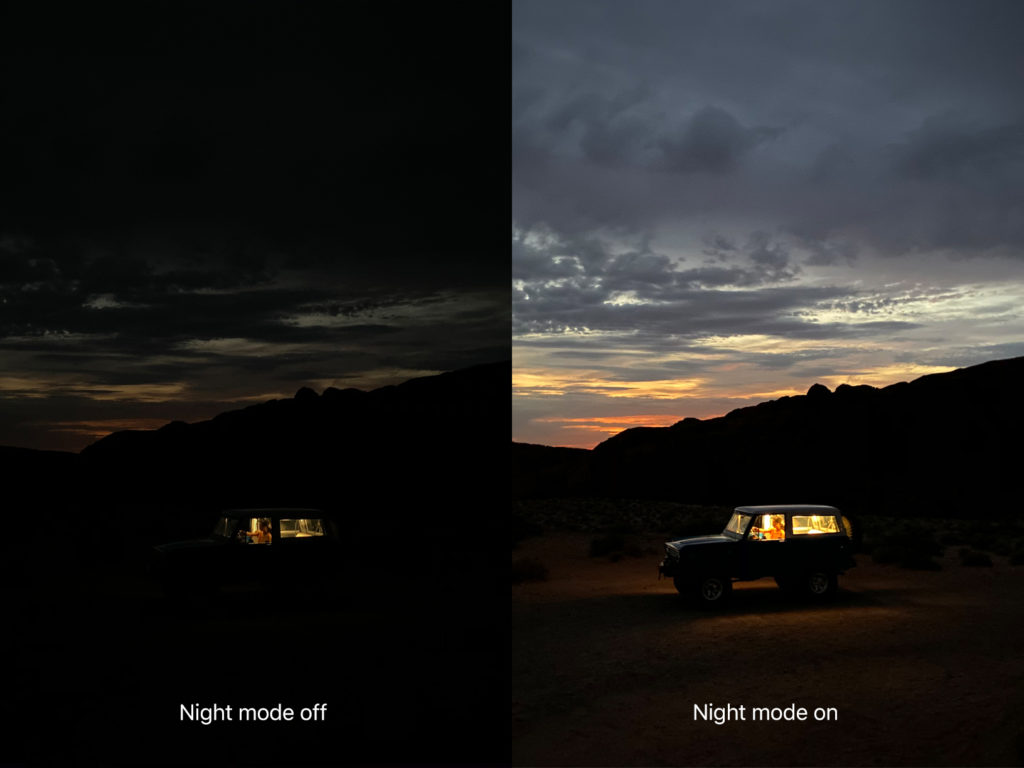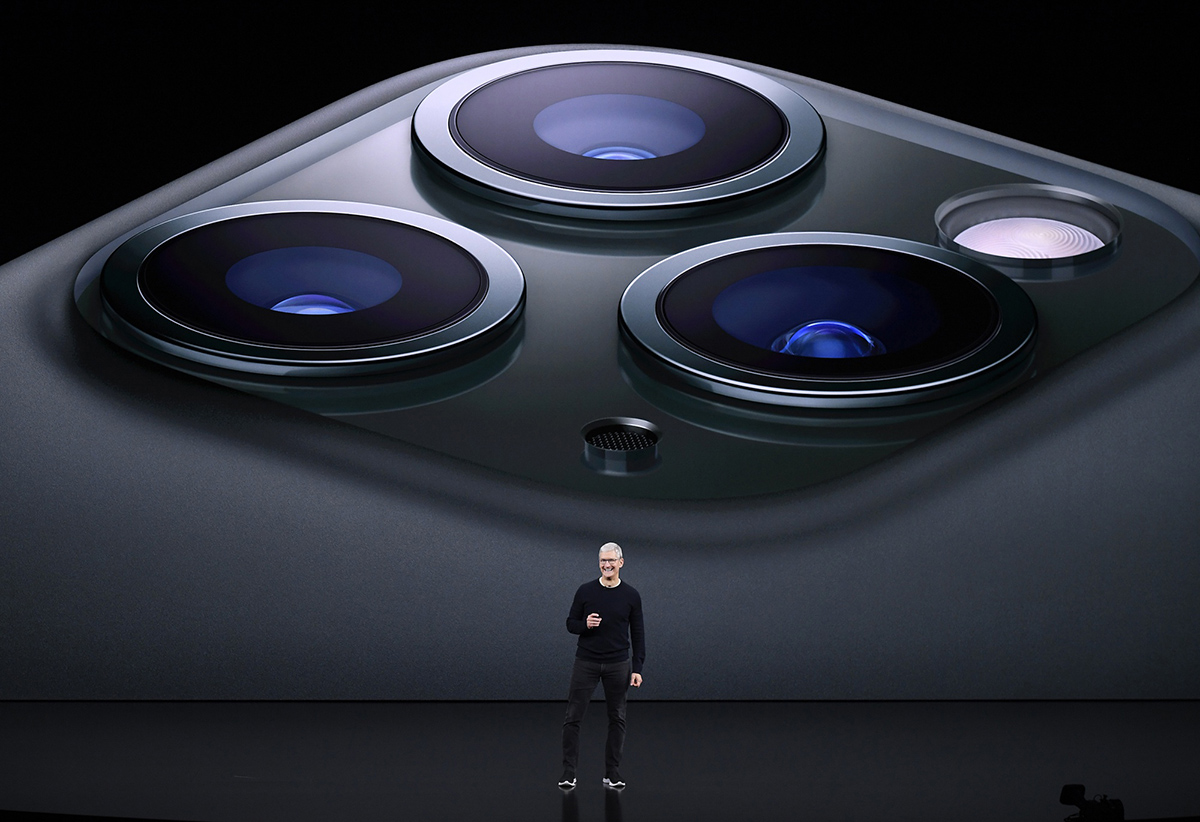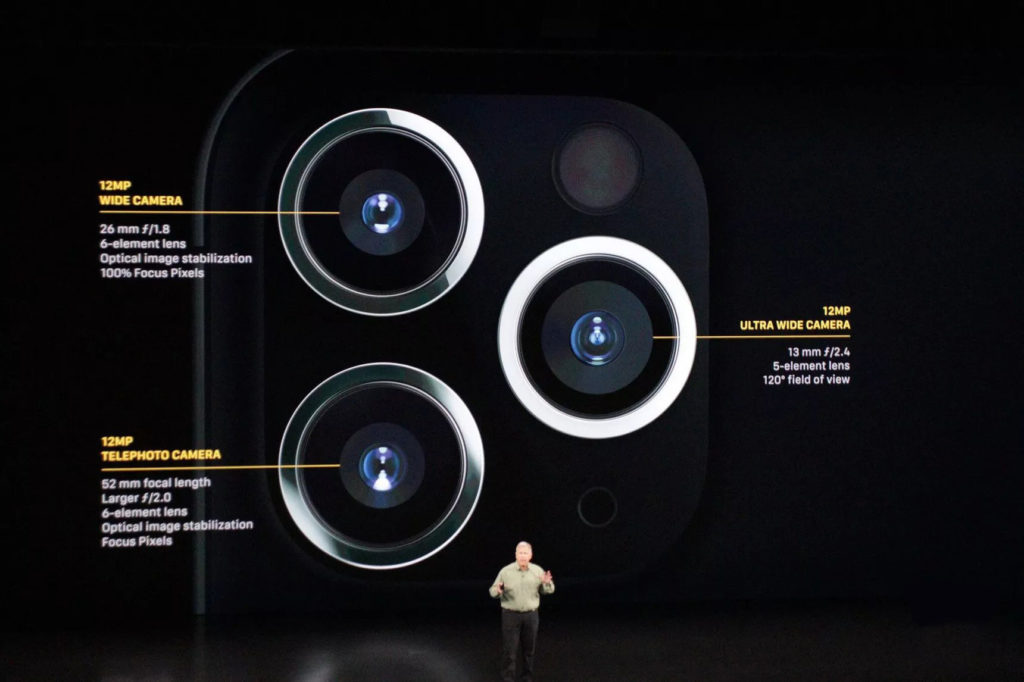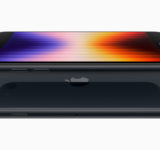As expected, Apple’s new iPhone 11 Pro and Pro Max has been unveiled today, both being an expensive yet sophisticated alternative to the much cheaper iPhone 11. Both phones have triple-camera and a ‘Pro’ moniker that Apple was quite persistent with, in the event. To say the least, this phone is to get your work done, just like you would do from your MacBook Pro or iPad Pro.
Both phones carry on the same screen sizes from the iPhone XS and iPhone XS Max — i.e. 5.8-inch and 6.5-inch but comes in a bold ‘midnight green’ color option. Also, the screen is no longer called Super Retina, rather it is now known by ‘Super Retina XDR’ — just a fancy name for an OLED display, which outputs 1,200 nits of brightness and 15 percent more efficiency.

Besides that, the main upgrade can be seen in terms of the camera. The telephoto lens (12MP, f/2.0) — which captures up to 40 percent more light — and primary camera (12MP, f/1.8) are now joined by a 12MP ultra-wide-angle sensor (120-degree field of view) letting you capture images from three different perspectives; it even lets you capture from all three sensors at the same time. Add to that, the phone gets Apple’s new high-key monochrome mode and a night mode to be in contention with Google’s Pixel lineup.
Moreover, the video front also gets a proper update. Along with being able to change between multiple perspectives on the go — at 4K 60fps — the phone outputs an improved dynamic range videos. On top of that, you can now edit videos all from Apple’s own built-in video editing suite. Also, the front-facing 12MP camera can now shoot both 4K and slow-motion videos which Apple likes to call ‘Slofies’.

Apple also presented its new computational photography feature entitled “Deep Fusion”, which captures nine images: four short images, four secondary images, and one long exposure. After that, it uses machine learning to combine those images into a single image that offers much more detail and less noise.
Other noticeable upgrades include FaceID, which now works at more angles, WiFi 6, new Dolby Atmos stereo speakers and of course, an 18W fast charger.
Apple’s new iPhone 11 Pro starts at a $999 price tag for a mere 64GB storage, while the Pro Max will cost $100 more, that is $1,099, also for the 64GB variant. Additional storage options will set you back $1,149 for the 256GB variant of iPhone 11 Pro and $1,249 for the Pro Max. The 512GB variant will cost $1,349 for 11 Pro and a whopping $1,449 for the Pro Max.
Looking back at the pricing structure, this year, both phones could carry a premium price tag in the Nepali market; more likely, in the territory of NPR 1,50,000 for the base variant.








